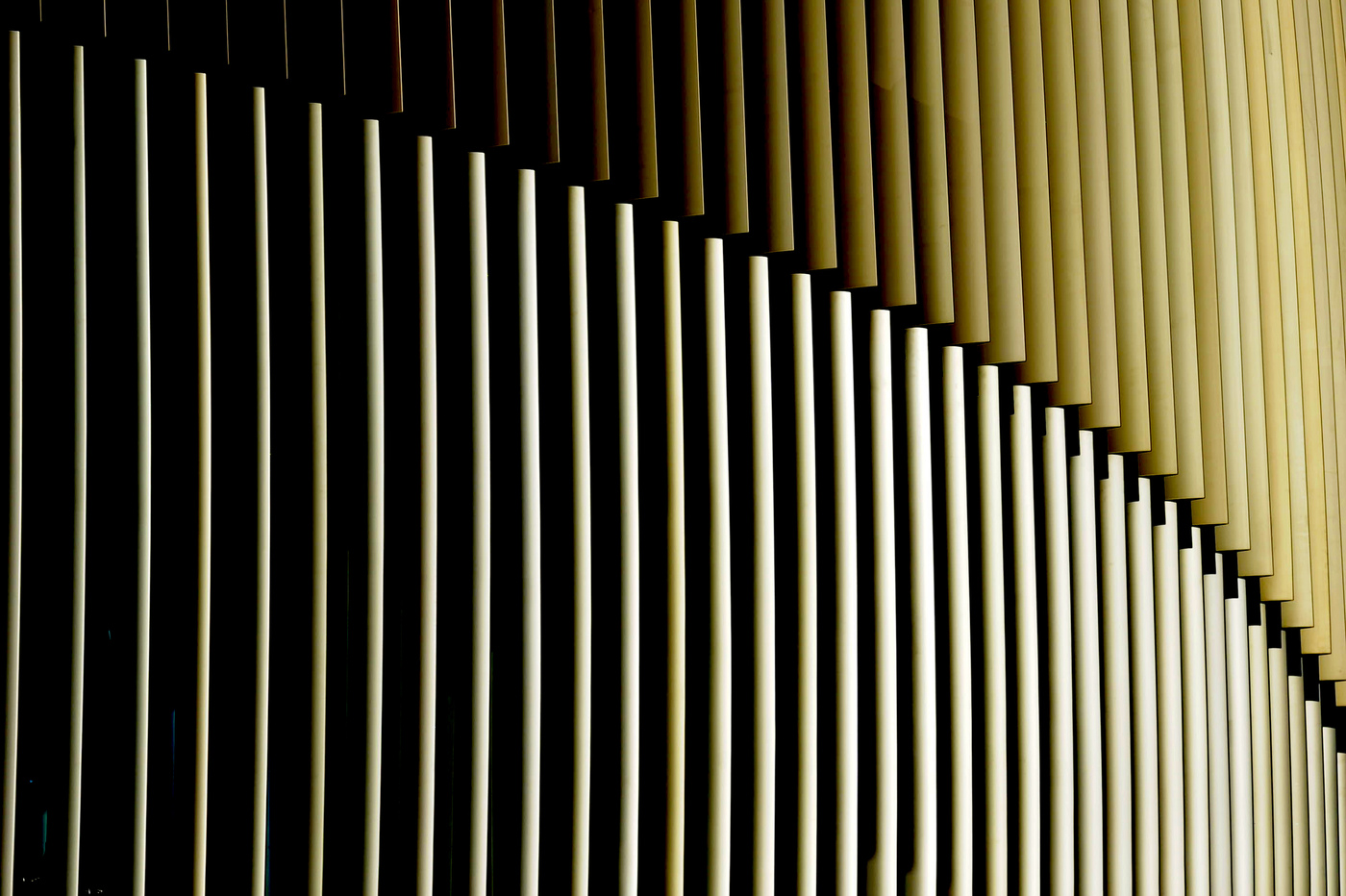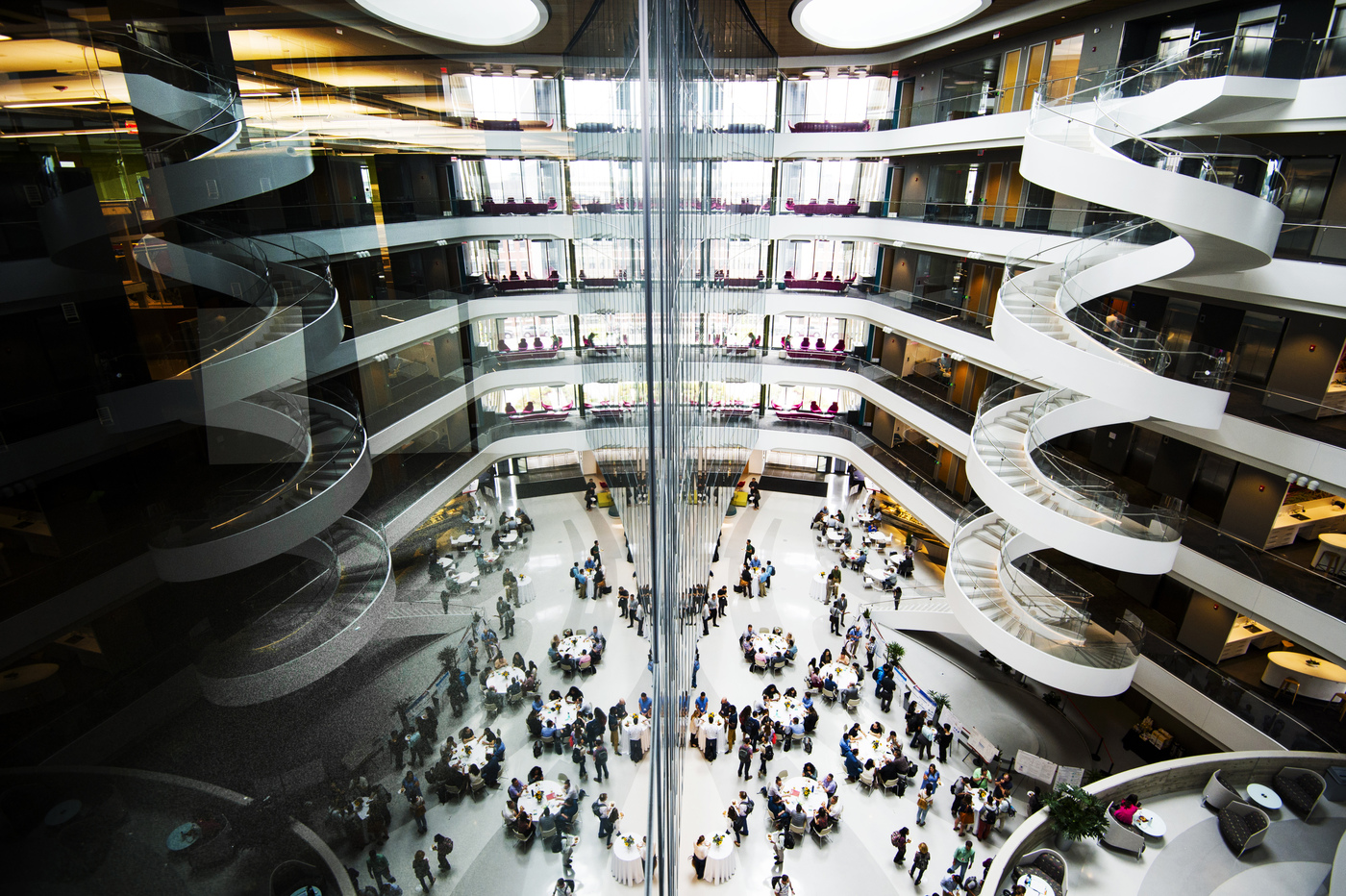By Greg St. Martin
News at Northeastern
If you’re trying to find the most beautiful building in Boston, look no further than Northeastern’s campus.
The Interdisciplinary Science and Engineering Complex has received the 2018 Harleston Parker Medal from theBoston Society of Architects, a nonprofit organization and chapter of the American Institute of Architects. The award, which is the organization’s highest honor, recognizes “the single most beautiful building or other structure” that was built in the metropolitan Boston area in the past 10 years.

Photo by Matthew Modoono/Northeastern University
Payette, a Boston-based architectural firm, designed the building, known as ISEC, which is located on Columbus Avenue. The building is six stories tall and features 234,000 square feet of space for research across disciplines in areas such as cybersecurity, robotics, coastal sustainability, community resilience, and drug delivery.
ISEC’s interior is filled with natural light, and includes a large atrium and a spiral staircase. The atrium is surrounded by laboratories, classrooms, and meeting spaces with glass walls that enable visitors to observe the research and academic activities underway throughout the building.
The exterior of the building has an unconventional design and shape with two distinct façades: curved bronze-coated aluminum fins on the western side, and gray ribbed metal panels on the eastern side.



Kevin Sullivan, the president and chief executive officer of Payette, said the building looks unlike any other research facility in the country.
“The spirit and energy in this transformational environment in Northeastern really influenced us in designing this building,” Sullivan said.
The building is LEED Gold certified, which is the most widely-used rating system in the world for sustainably designed structures. Gold is the second highest level of the rating system, which was developed by the U.S. Green Building Council. Overall, the building saves 75 percent more energy than a typical research lab thanks to a combination of highly efficient systems that heat, cool, ventilate, light, and move water throughout the building.

Photo by Matthew Modoono/Northeastern University
Kathy Spiegelman, vice president and chief of campus planning at Northeastern, said the ISEC project included both a pedestrian bridge and landscape improvements such as outdoor seating, bike racks, and trees for the university community and the public to use and enjoy.
ISEC opened in 2017, and the next phase of the project is the construction of the pedestrian bridge, which crosses over railway tracks stretching through Northeastern’s Boston campus. The bridge will connect the Huntington and Columbus avenue sides of the campus as well as the city’s neighborhoods of Roxbury and the Fenway.


In October, work crews lowered into place a 132-foot-long section of the bridge that stretches above five rail lines used by Amtrak and Greater Boston’s public transit system, known as the MBTA. The bridge, which is scheduled to open later this year, will slope down toward Columbus Avenue, and also connect to a terrace on the second floor of ISEC to provide direct access into the building.

Photo by Matthew Modoono/Northeastern University
ISEC is part of Northeastern’s commitment to making physical improvements at the edges of its Boston campus that benefit both the university and the neighboring community. Along Columbus Avenue, the university has also revitalized William E. Carter Playground and assembled an inflatable dome over one of the new fields to allow for year-round sports and recreational activities. Northeastern also formed a partnership with a private student housing developer to build a new residence hall across the street from the playground and ISEC.


“The building and its landscape’s connectedness to the community, having sustainability built into every aspect of its design, and having interdisciplinary research fully on display are three major features of the project that make it distinctive,” Spiegelman said.
(Reprinted with permission from the News at Northeastern.)


















